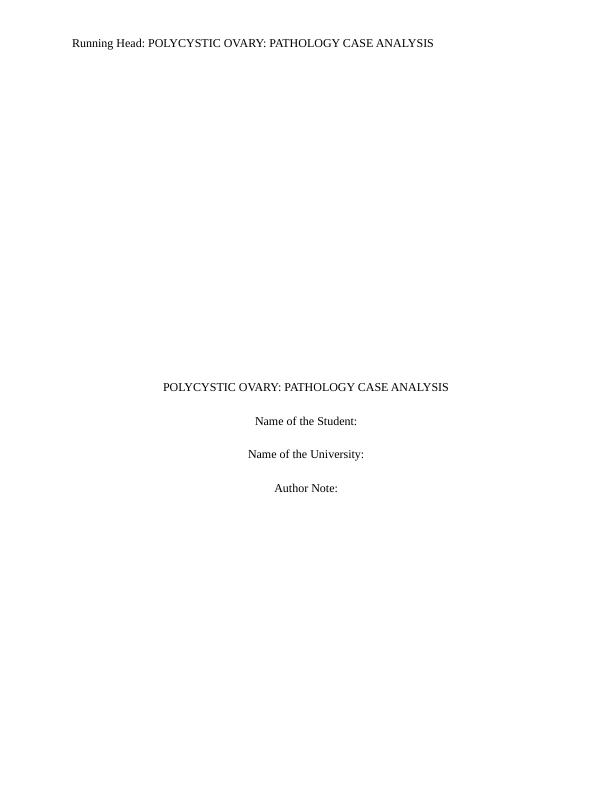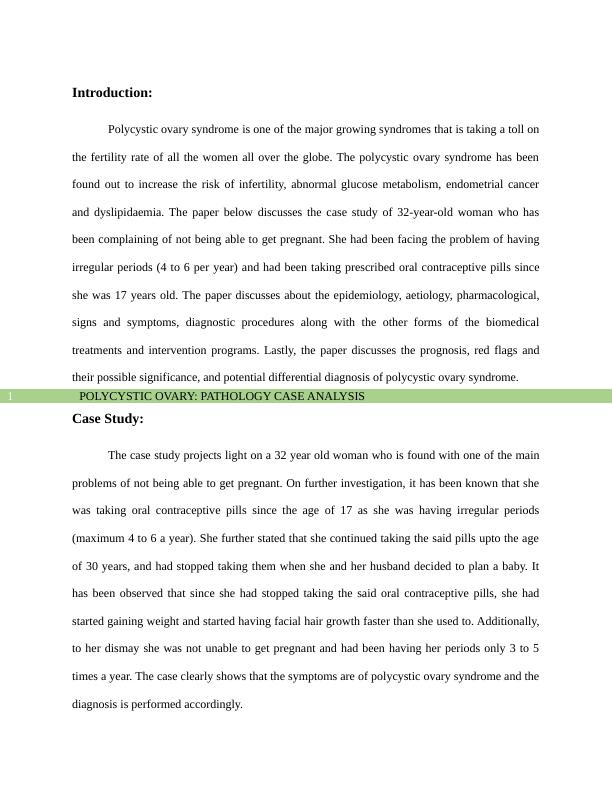Polycystic Ovary : Pathology Case Analysis
Describe and explain the major pathophysiological processes, their underpinning mechanisms and how they contribute to the features of disease in the biomedical model.
11 Pages2397 Words28 Views
Added on 2022-08-08
About This Document
pathology case analysis
Polycystic Ovary : Pathology Case Analysis
Describe and explain the major pathophysiological processes, their underpinning mechanisms and how they contribute to the features of disease in the biomedical model.
Added on 2022-08-08
ShareRelated Documents
End of preview
Want to access all the pages? Upload your documents or become a member.
Polycystic Ovarian Syndrome Pcos Assignment 2023
|8
|1726
|22
Nursing - Sharon Case study 2022
|10
|3106
|15
Nursing Polycystic Ovarian Syndrome Case Study 2022
|7
|1619
|11
Literature Review on Female Infertility
|14
|3784
|265
Pathophysiology of Premenstrual Syndrome Symptoms: Explaining Tracey's Case Study
|8
|1988
|133
Polycystic Ovary Syndrome (PCOS).
|16
|1247
|13




